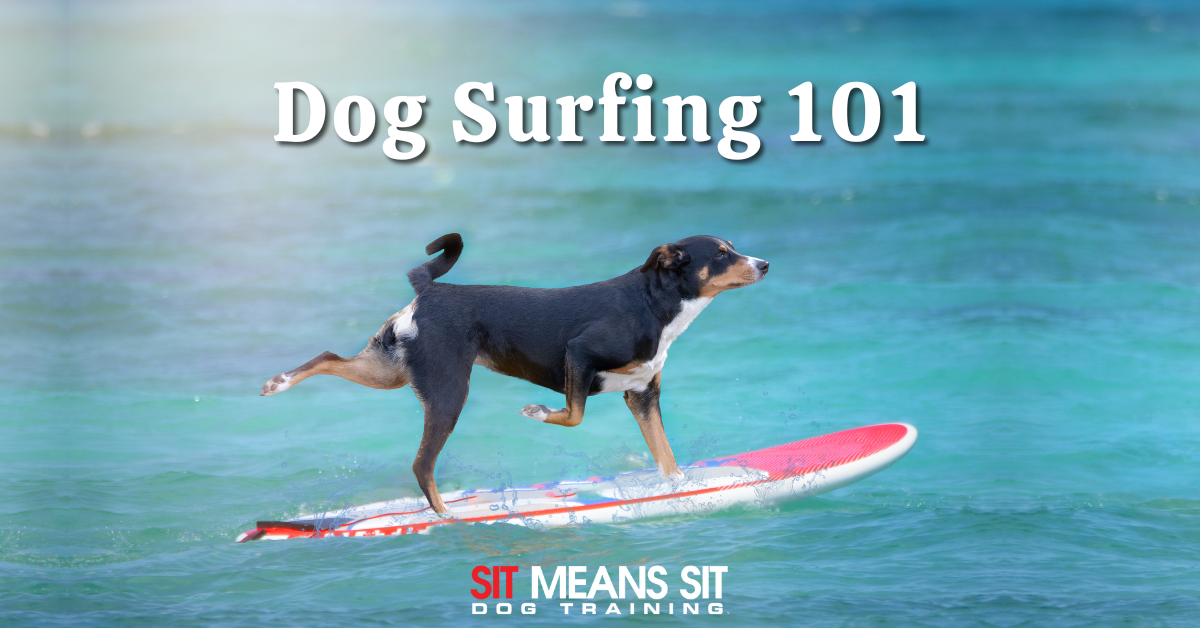Dog surfing is growing in popularity, and it’s easy to see why! Whether you’re an experienced surfer or just looking for a way to bond with your dog, it’s a great way to get active and have fun together. But before you grab your board and head to the beach with Fido, it’s important to prepare. In this guide, we’ll cover everything you need to know to make your surfing experience a success!
What is Dog Surfing?
Dog surfing, as the name suggests, involves dogs riding waves on surfboards! It’s a fun activity where dogs are trained to balance on surfboards while catching waves, often alongside their human surfers. Some pups naturally take to the sport, while others require a bit more training and patience. Whether it’s just for fun or part of a competitive event, dog surfing is a unique way to bond with your dog, stay active, and enjoy the water together.
History of Canine Surfing
Believe it or not, dog surfing isn’t a modern invention. Its origins trace back to the 1920s when a documentary captured the first instances of a dog riding waves. Then, a silent film was released in the 1930s called “On the Waves in Waikiki”. This film showed Phillip K. Auna and his pet terrier surfing together in Hawaii, which introduced many viewers to this sport.
In 1944, National Geographic magazine published a full-page article with an image of a dog riding a wave, helping to further cement the sport’s place in surf culture. The dog featured in the article, named Rusty, inspired many pet owners to train their own dogs to surf. The modern era of dog surfing began in 2006 when California hosted the first major dog surfing competition. Today, dog surfing competitions take place in Hawaii, California, Texas, Florida, Australia, France, and more!
Why Teach Your Dog to Surf?
There are several reasons you might want to teach Fido to surf (besides having the coolest pup on the block). Firstly, it provides an excellent workout for dogs that engages their brain and muscles. Surfing improves dogs’ balance and coordination, which will benefit them for years to come. It also provides pups with mental stimulation by helping them focus, learn new skills, and adapt to unpredictable environments.
In addition, surfing is a prime opportunity for your furry friend to gain some much-needed socialization. Participating in dog surfing events can help pups become more confident in crowded environments. It also allows canines to interact with each other in a controlled and enjoyable setting. And last but certainly not least, surfing creates a unique opportunity for you and your dog to bond. Spending time on the water with Fido can strengthen your relationship, build trust, and make many long-lasting memories.
Dog Surfing: How to Get Started
If you’ve determined that your dog is a good candidate for surfing, it’s time to start training! To get your dog comfortable with surfing, start by introducing them to the surfboard on land. Let them explore it at their own pace—standing, sitting, or sniffing it. Rewarding them with treats for positive interactions will help create a safe, fun association with the board. Next, work on balance. Dogs are used to stable surfaces, so introduce them to things like small trampolines or wobble boards to help them adjust to unstable footing.
Keeping Fido Safe on the Water
First and foremost, even if your dog is a strong swimmer, a life jacket is a must. As your pup learns to surf, it’s inevitable that they’re going to fall off their board. A well-fitting dog life jacket will help keep them afloat if they fall off the board or get caught in a strong current. Choose a jacket that’s designed for dogs and includes a handle so you can easily lift your dog back onto the board. To help Fido get comfortable wearing the lifejacket, have them wear it around the house prior to your surfing excursion.
It’s crucial to supervise your dog at all times while they’re in the water, since even the most confident pups can lose their balance or get startled by a wave. Make sure to keep an eye on your dog’s energy levels, too. Surfing is a physically demanding activity, and if your dog shows signs of exhaustion like heavy panting, it’s time to take a break. Make sure you protect their paws from hot sand as well, and don’t forget Fido’s sunscreen!
When it comes to teaching your pup how to surf, patience is key. Your furry friend needs plenty of time, guidance, and consistency to nail this skill. Take your time, and enjoy the process. Getting your dog comfortable on a surfboard and in the water takes time, but with the right approach, Fido will soon be catching waves like a pro. Happy surfing!

